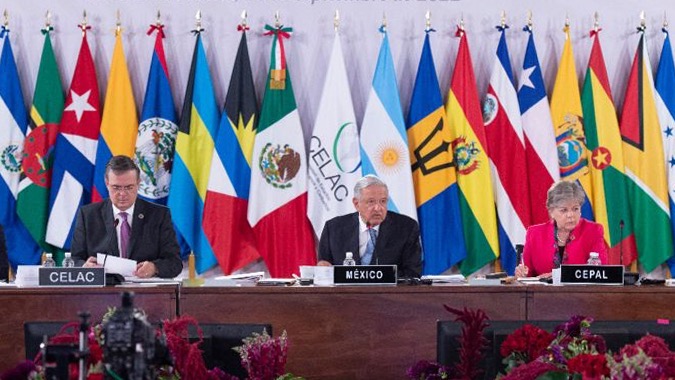Bridging the Healthcare Divide: Community Health Centers and Equitable Access in the Americas
The pursuit of health equity is a cornerstone of thriving communities. Across North and South America, access to quality healthcare remains unevenly distributed, creating significant disparities that impact individual well-being and societal progress. This disparity necessitates a multi-faceted approach, with community health centers playing a critical role in bridging this gap.
The lack of access to healthcare is not merely an inconvenience; it's a fundamental injustice. Many communities, particularly marginalized populations, face formidable barriers to essential medical services. These barriers often stem from a complex interplay of socioeconomic factors, geographical limitations, and systemic inequalities. The consequences are severe, leading to preventable illnesses, inadequate treatment, and ultimately, a compromised quality of life.
Several factors contribute to this pervasive inequality. Financial constraints often prevent individuals from affording healthcare or securing health insurance. Inadequate infrastructure, particularly in rural and remote areas, exacerbates the issue, creating significant geographical barriers to care. These limitations are further compounded by cultural and linguistic barriers, potentially hindering effective communication between patients and healthcare providers.
The impact on community development is profound. Limited access to healthcare translates to reduced productivity and economic hardship for individuals and families. Untreated illnesses not only cause suffering but also place a heavier burden on already strained healthcare systems, creating a vicious cycle of inequity. This disparity hinders overall social progress, perpetuating a cycle of poverty and ill-health.
Community health centers are vital in mitigating these disparities. Strategically located within underserved communities, these centers offer a comprehensive range of services, including primary care, preventative medicine, and health education tailored to the specific needs of the population they serve. Their commitment to affordable and culturally sensitive care empowers individuals to proactively manage their health and well-being.
Innovative initiatives are demonstrating tangible progress in addressing healthcare disparities across the Americas. Mobile health clinics, for example, are bringing much-needed medical care directly to remote and underserved populations. These mobile units provide essential medical services, preventive screenings, and health education, ensuring access to quality care regardless of geographical location.
Empowering communities is paramount to sustainable change. Grassroots initiatives that actively involve community members in decision-making processes are crucial. Providing communities with the resources and autonomy to address their healthcare needs fosters a sense of ownership and responsibility, strengthening their capacity for self-determination.
Health literacy plays a crucial role in improving health outcomes. Promoting health education and disseminating accurate information about available healthcare services empowers individuals to make informed decisions about their own health. Furthermore, raising awareness about the importance of regular check-ups, preventative care, and disease management can significantly reduce the burden of chronic illnesses.
Addressing this complex challenge requires collaboration among governments, healthcare providers, non-governmental organizations (NGOs), and community members themselves. A comprehensive and sustainable approach necessitates a coordinated effort, leveraging the expertise and resources of all stakeholders.
Strategic investment in healthcare infrastructure is essential. Governments must prioritize the allocation of resources to build and maintain healthcare facilities in underserved areas. Improving transportation infrastructure is equally crucial, ensuring accessibility to healthcare centers for those living in remote regions.
Technology offers transformative potential. Telemedicine, in particular, is breaking down geographical barriers, enabling remote consultations and increasing access to specialized care. Embracing such innovations can significantly enhance healthcare accessibility for marginalized communities.
Investing in the healthcare workforce is paramount. Equipping healthcare professionals with advanced training and providing supportive working environments are essential for improving the quality of care. Adequate staffing and competitive compensation are crucial to attracting and retaining qualified healthcare personnel.
Data-driven decision-making is crucial. The collection and analysis of data on healthcare utilization, disease prevalence, and health outcomes allow for the identification of areas requiring targeted interventions. Evidence-based strategies, informed by robust data analysis, are key to effective and sustainable solutions.
While the challenges are significant, they also present opportunities for growth and collaboration. By acknowledging the unique strengths of diverse communities and fostering a spirit of unity, we can work towards a shared vision of health equity. Building resilient healthcare systems that serve all members of society requires a collective commitment and a shared responsibility.
In conclusion, achieving health equity in the Americas requires a sustained and multifaceted effort. By investing in community health centers, empowering communities, promoting health literacy, leveraging technological advancements, and fostering collaborative partnerships, we can create a healthier and more equitable future for all. Let us embrace this collective responsibility and work towards a future where access to quality healthcare is a reality for every individual, regardless of their background or location. Join the movement for #HealthEquity.




No comments yet. Be the first to share your thoughts!